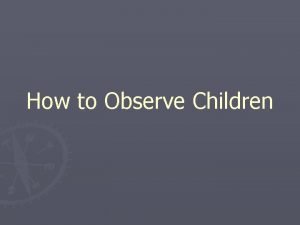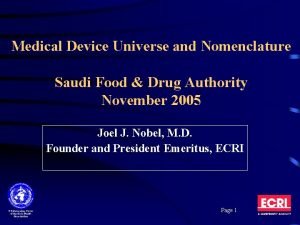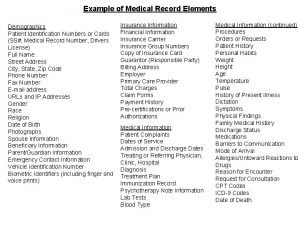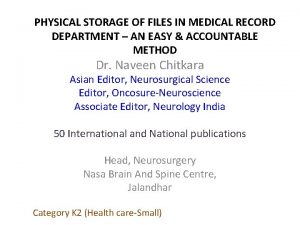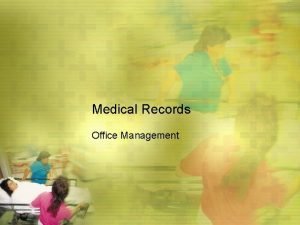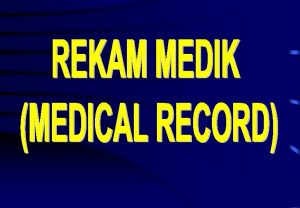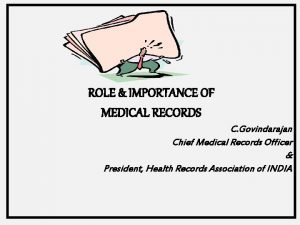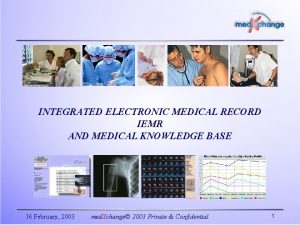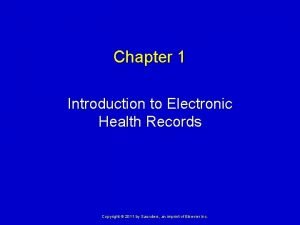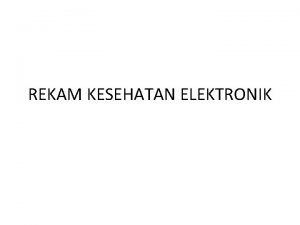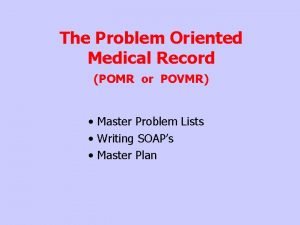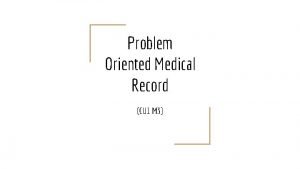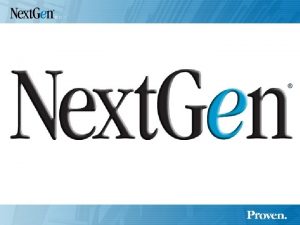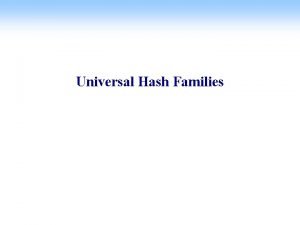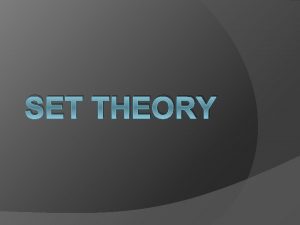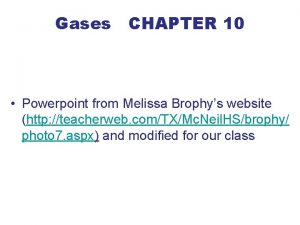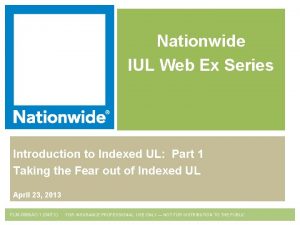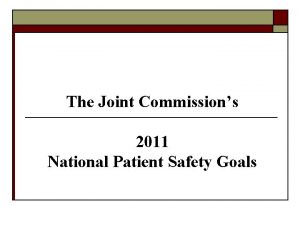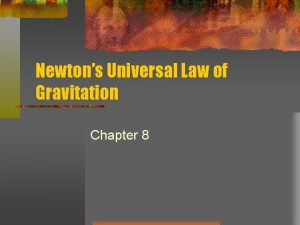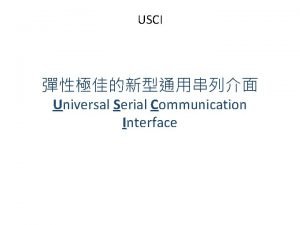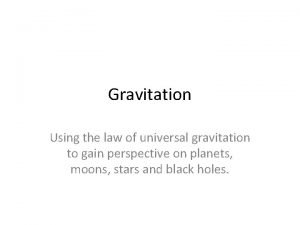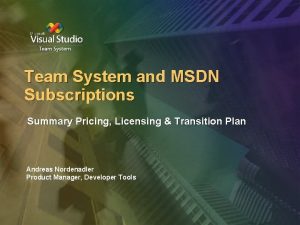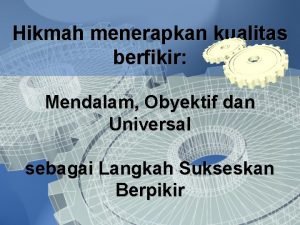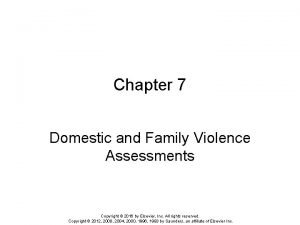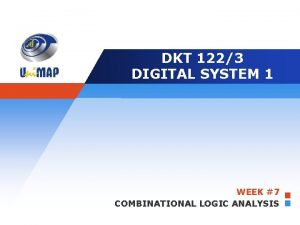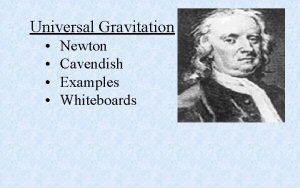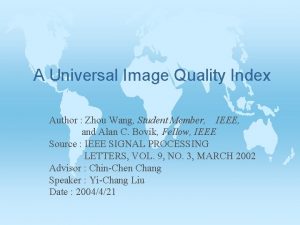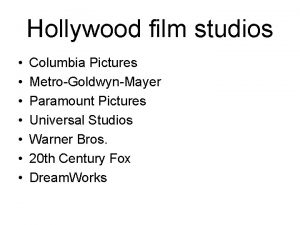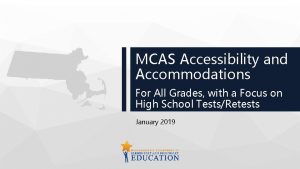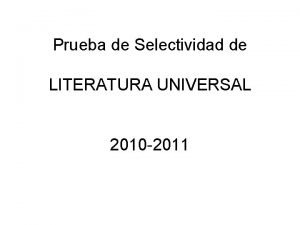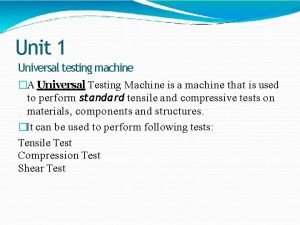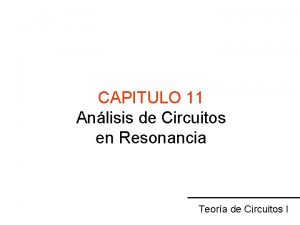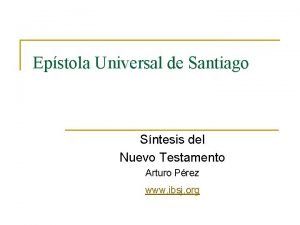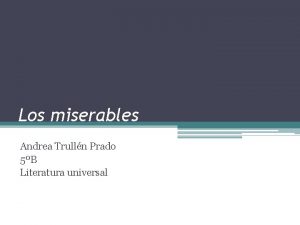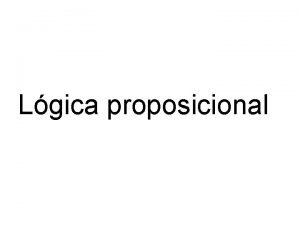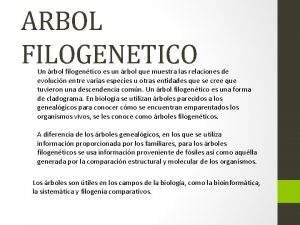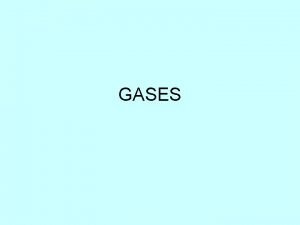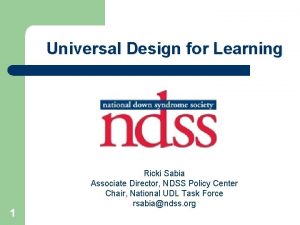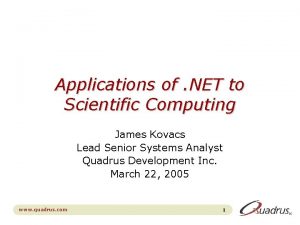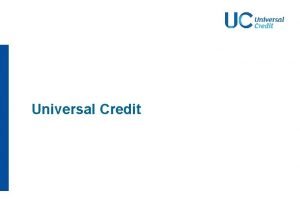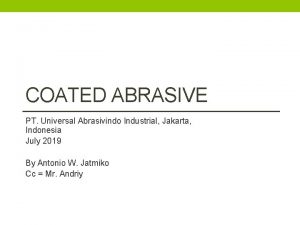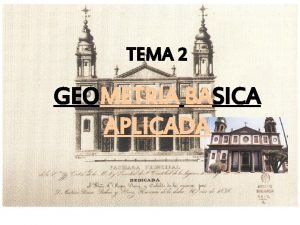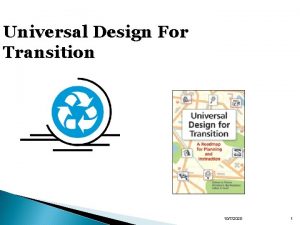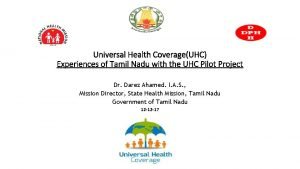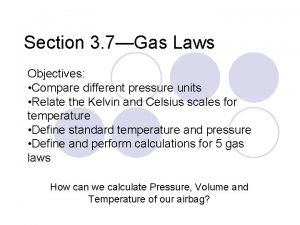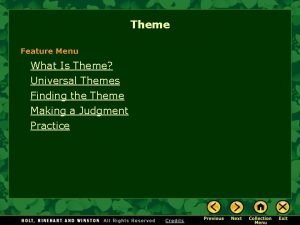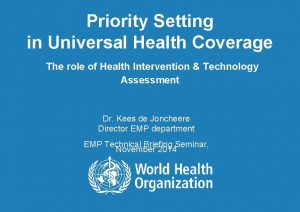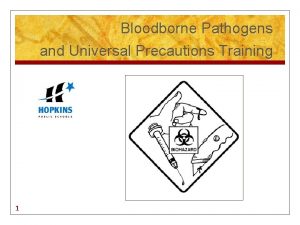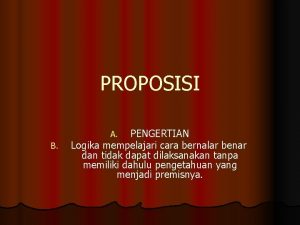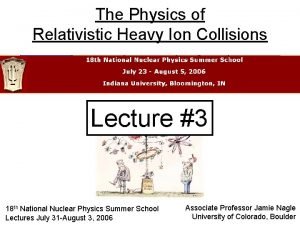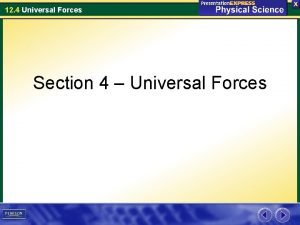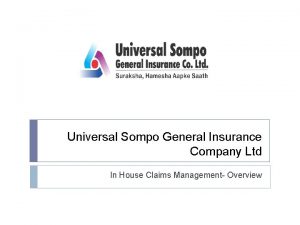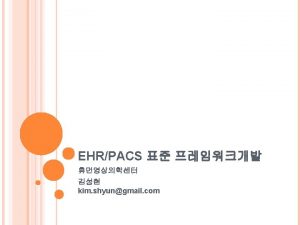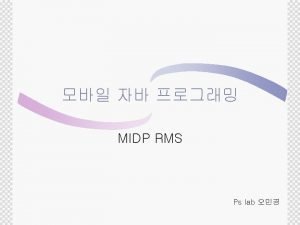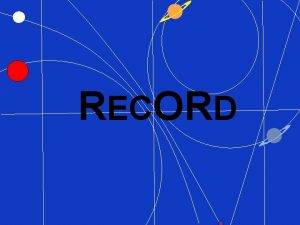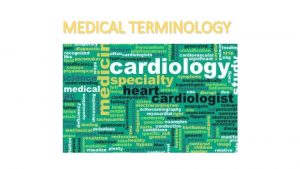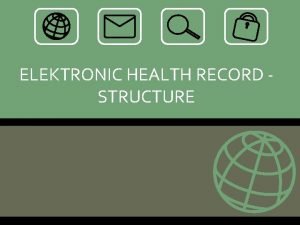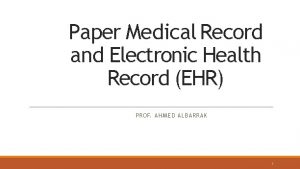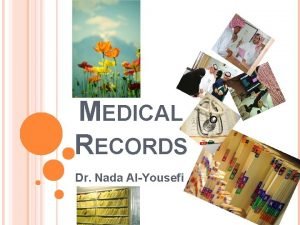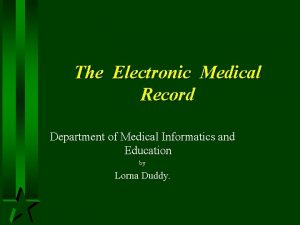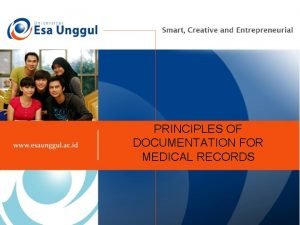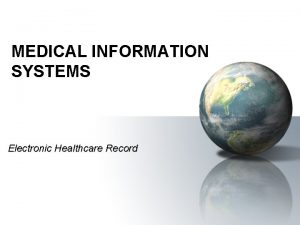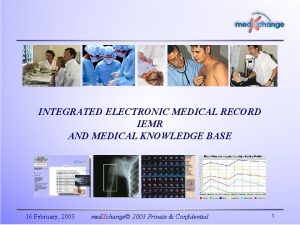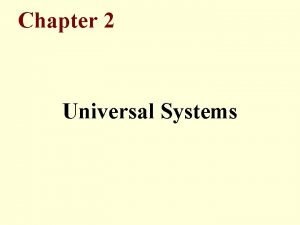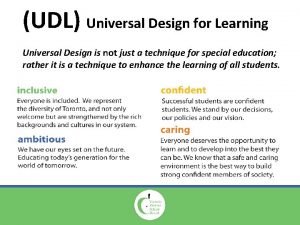Universal Medical Record Medical Record What is a


















































































- Slides: 82

Universal Medical Record

Medical Record • What is a medical record – Sources of information – Uses – How is it maintained – What are its component parts

Medical Record • What is used for – By whom – How accessed – When accessed

Purposes of a MR • Record information from the patient • Record caregivers findings and (planned) treatments • Communicate information to other (subsequent careivers) • Coordinate the activities of caregivers • Serve as a formal (legal/financial) record • Provide data for studies and research



Clinical users • Want computer support to be “zipless” • Computers should help with noxious tasks but shouldn’t infringe on other activities • Want intuitive interfaces requiring no training like telephone or ATM • Need critical mass of functionality to use a workstation

Definitions • Patient record – Repository of information about a single patient – Generated by health care professionals – Information from direct interaction with a patient

Definitions • Internet resource • Computer-based patient record – Electronic patient record – Resides in a system designed to support users – Access to complete, accurate and legible data – Alerts, reminders, decision support – Links to medical knowledge

Definitions • Primary patient record – Maintained by health care professionals • Secondary patient record – Derived from primary record – Used to aid non-clinical workers for supporting evaluating, advancing patient care • Support = money • Evaluation = quality control, audits • Advancement = research

Data • Most people have many medical records • Some medical centers have up to 4 million records • Record must be stored by law for 25 years • Storage formats – Paper – Microfiche – Disks, computer cards, tapes

Data • Average weight of a record 1. 5 lbs • 35 -50% of clinician’s time is spent documenting in the record

Data • The cost of information handling is 25% of total hospital operating cost • Professionals spend up to 35% of their time in information handling

Strength of the paper record • • • Familiarity to users Portability No downtime (? ) Flexibility in recording data Paper records can be browsed through for patterns that aren’t explicitly available

Weakness of the paper record • • Content Format Access, availability and retrieval Linkages and integration

Content • Data – Missing • Never acquired, not recorded, lost – Illegible • Handwriting appalling, worse when hurried, not standardized, ? Intended to obscure – Inaccurate, incomplete • Anesthesia record

Format • Data fragmented and not designed for dealing with multiple problems over time • Usually organized chronologically NOT problematically – POMR: Lawrence Weed

POMR

Access, Availability and Retrieval • Records unavailable 10 -30% of the time • Record movement • Simultaneous use impossible – ICU example

Linkages and integration • Discontinuity – Outpatient to inpatient – Interfaces to clinical data, other records, administrative info non-existent


Terminology • CPR – computerized patient record • EPR – electronic patient record • UMR – universal medical record


Disease coding formats • Specification of disease • Specification of procedures





Medical Record • Data formats – Traditional – Digital – Storage implications






Outpatient documents














































Future • Personnel/administrative costs will continue to rise, while automation costs will decrease • Standardization of terminology and care • Maturing networking technology • Integration with decision support • Development of patient specific educational materials • Graphical interfaces, wireless networking and integrated workstations will enhance clinician acceptance

 Example of running record observation of a child
Example of running record observation of a child Suffix -ion medical terminology
Suffix -ion medical terminology Universal medical device nomenclature system
Universal medical device nomenclature system Medical record number on insurance card
Medical record number on insurance card Terminal digit filing
Terminal digit filing Types of medical documentation
Types of medical documentation Medical record artinya
Medical record artinya Importance of medical records
Importance of medical records Integrated electronic medical record
Integrated electronic medical record Documenters of the medical record
Documenters of the medical record Apa itu emr
Apa itu emr You pomr
You pomr Problem oriented medical record definition
Problem oriented medical record definition Next gen emr
Next gen emr Difference between medical report and medical certificate
Difference between medical report and medical certificate Torrance memorial tcu
Torrance memorial tcu Cartersville medical center medical records
Cartersville medical center medical records Greater baltimore medical center medical records
Greater baltimore medical center medical records Doctors license number
Doctors license number Hash family
Hash family Set notation symbol meanings
Set notation symbol meanings Explain dalton's law of partial pressure
Explain dalton's law of partial pressure Nationwide indexed universal life accumulator ii
Nationwide indexed universal life accumulator ii Sharing of diverse information through universal web access
Sharing of diverse information through universal web access Interseccion
Interseccion Npsg #8
Npsg #8 Newton's universal law of gravitation simplified
Newton's universal law of gravitation simplified Confirmtx
Confirmtx Universal gravitation law
Universal gravitation law Buy msdn subscription
Buy msdn subscription Unconcerned or nonissue approach
Unconcerned or nonissue approach Berfikir universal
Berfikir universal Chapter 7 domestic and family violence assessment
Chapter 7 domestic and family violence assessment He was born in1927 and expanded piaget's theory
He was born in1927 and expanded piaget's theory Universal property of nand gate
Universal property of nand gate Law of universal gravitation kid definition
Law of universal gravitation kid definition The law of universal attraction
The law of universal attraction Universal image quality index
Universal image quality index Universal theme
Universal theme Columbia pictures and paramount pictures
Columbia pictures and paramount pictures Udl
Udl Dese mcas accommodations
Dese mcas accommodations Subgeneros del teatro
Subgeneros del teatro Universal values
Universal values Universal testing machine working principle
Universal testing machine working principle Curva universal de resonancia
Curva universal de resonancia Epstola
Epstola Universal prado
Universal prado Basic connectives
Basic connectives The united states ought to provide a universal basic income
The united states ought to provide a universal basic income Silogismo disyuntivo ejemplos
Silogismo disyuntivo ejemplos Arbol filogenetico cronograma
Arbol filogenetico cronograma Características de dalton
Características de dalton Explain the holistic perception of harmony in existence
Explain the holistic perception of harmony in existence Newton's law of gravitation
Newton's law of gravitation Universal design for learning
Universal design for learning Quadrus universal cloud
Quadrus universal cloud Perform an edibility test
Perform an edibility test Universal credit assessment period
Universal credit assessment period Classe de palavras quantificadores
Classe de palavras quantificadores Pt universal abrasivindo industrial
Pt universal abrasivindo industrial Law and order orientation
Law and order orientation Triangulo universal de escalas
Triangulo universal de escalas Novela universal
Novela universal Universal design for transition
Universal design for transition Fluido cósmico universal
Fluido cósmico universal Uhc op app
Uhc op app Units of pressure
Units of pressure Safrns
Safrns What is the difference between theme and universal theme?
What is the difference between theme and universal theme? Dimensions of universal health coverage
Dimensions of universal health coverage What is thematic idea
What is thematic idea Radovanovi
Radovanovi Columbia pictures and universal pictures
Columbia pictures and universal pictures Smooth bore nozzle gpm formula
Smooth bore nozzle gpm formula Universal precautions training
Universal precautions training Dimension of universal gas constant
Dimension of universal gas constant Contoh proposisi analitik
Contoh proposisi analitik Universal physics
Universal physics Theme for sacrifice
Theme for sacrifice What are the 4 universal forces
What are the 4 universal forces A universal image quality index
A universal image quality index Usgi branch portal
Usgi branch portal
